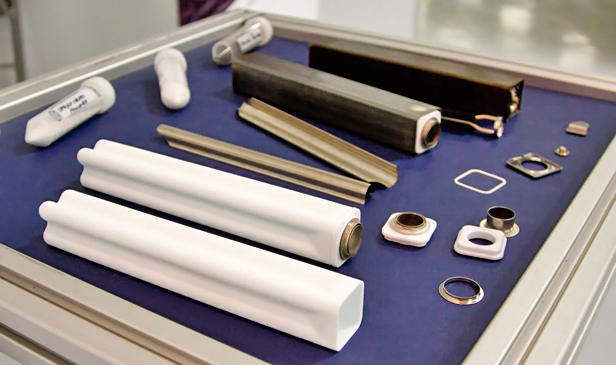GE’s Novel Battery to Bolster the Grid

Yesterday GE officially opened a sprawling, $100 million battery factory in Schenectady, New York, with a dramatic battery-powered show of lights, music, and pyrotechnics. The factory, which will eventually employ 450 people, makes a new kind of battery—based on sodium and nickel. GE says the technology, which is more durable and charges more quickly than lead-acid batteries, will make off-grid power generation more efficient and help utilities integrate power from a wide range of sources, including intermittent ones such as wind and solar power.
While GE will have strong competition for new grid battery technologies from companies such as Aquion Energy and Liquid Metal Battery, the manufacturing giant clearly has high ambitions for its technology, recently forming a new business unit to commercialize the battery technology. Indeed, at the factory opening, the company announced an additional $70 million investment to increase its capacity to help meet a backlog of orders. “The cost of electricity over time is going to go down because [GE’s battery] is going to give utilities the ability to use a multitude of different technologies at the same time,” GE CEO Jeffrey Immelt told a group of reporters at the plant opening.
The first applications will be somewhat less ambitious. GE’s first customer is a South African company—Megatron Federal—that will use the batteries to power cell-phone towers in Nigeria. Those are usually powered by diesel generators. Pairing the generators with the new batteries can help them run far more efficiently. “You save 53 percent on fuel, 45 percent on maintenance, and about 60 percent on diesel generator replacements,” says Brandon Harcus, division manager for telecommunications for Megatron Federal. “For our Nigerian application, the savings are substantial, about $1.3 million over 20 years per cell tower. You use a lot less fuel and produce a lot less carbon.”
For this application, the battery has two primary advantages over the lead-acid batteries that sometimes back up the generators. They can charge faster—over two hours compared to 10 hours for lead-acid batteries. And unlike many other batteries, GE’s new battery doesn’t require air conditioning, which helps reduce fuel consumption at the site.
Besides powering cell-phone towers, the batteries could also be used to store power from wind turbines and solar panels to even out fluctuations in these power sources. GE also says they could be used in microgrids, small grids that are often the size of a village or military base and are designed to operate independently of the larger electrical grid while still getting grid-quality electricity.
The batteries are more expensive per kilowatt-hour than lead-acid batteries, but they’re expected to last longer, especially in applications in which the batteries are deeply discharged on a frequent basis, which damages lead-acid batteries. In some applications, lead-acid batteries might last only six months. Designed to be deeply discharged at least 3,500 times, GE’s sodium-nickel batteries could last through a decade of daily charging.
The basic battery technology—called sodium metal halide—originated in South Africa decades ago and was developed for use in transportation applications in the 1980s after the oil crisis. At one point it was used to power a Mercedes test vehicle. But not much came of the technology after oil prices plummeted and interest in alternatives to oil-powered cars waned. GE acquired the technology in 2007, and its research labs improved it by carefully studying the materials and “finely tweaking” the design, says Sandor Hollo, technology leader for GE Energy Storage.
The key to the technology is a ceramic electrolyte material that separates the electrodes. During charging, chloride ions are released from sodium chloride and combine with nickel to form nickel chloride. The sodium ions that remain move through the electrolyte into a reservoir. When the battery produces power, the ions move back through the electrode and the reaction is reversed. The process takes place at about 300 °C, inside an insulated container.
Keep Reading
Most Popular
Large language models can do jaw-dropping things. But nobody knows exactly why.
And that's a problem. Figuring it out is one of the biggest scientific puzzles of our time and a crucial step towards controlling more powerful future models.
How scientists traced a mysterious covid case back to six toilets
When wastewater surveillance turns into a hunt for a single infected individual, the ethics get tricky.
The problem with plug-in hybrids? Their drivers.
Plug-in hybrids are often sold as a transition to EVs, but new data from Europe shows we’re still underestimating the emissions they produce.
Google DeepMind’s new generative model makes Super Mario–like games from scratch
Genie learns how to control games by watching hours and hours of video. It could help train next-gen robots too.
Stay connected
Get the latest updates from
MIT Technology Review
Discover special offers, top stories, upcoming events, and more.